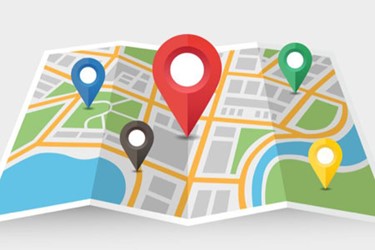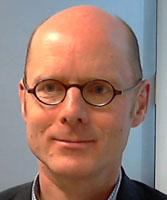Janssen Uses Geofencing To Monitor Clinical Trial Patients

By Ed Miseta, Chief Editor, Clinical Leader

When it comes to clinical studies, Janssen is one of those companies that seems to thrive on innovation. I have often wondered where all their new ideas originate. As you might expect, not all of them are generated internally.
About a year ago Janssen launched an innovation challenge. It invited tech companies to provide solutions for a very specific clinical challenge that centered on the long-term extension of clinical trials.
“Many trials have an extension phase where we look for the long-term impact of a treatment,” says Bert Hartog, senior director of Janssen Clinical Innovation, which is part of Janssen Research & Development, LLC. “The extension phase also allows us to produce long-term patient safety profiles. Unfortunately, the extension phase of a trial can be burdensome for patients and clinicians. At that point in the trial, patients no longer want to come back to the hospital for additional visits. Patients also get tired of a trial and want to get back to leading a normal life. That also makes it very difficult for clinics to keep track of them.”
That situation is what led Janssen to host the innovation challenge. The company wanted to find new ways of considering the extension phase in clinical trials.
Hospitalization Notifications

“If a patient in the extension phase of one of our trials were to enter a hospital or other emergency care site, we can notify the study site,” states Hartog. “This allows us to intercept these potential cases in near real-time. The notification would then trigger a conversation between the study team and the patient or their healthcare provider to determine the nature of the visit. The study team could then determine if the visit had anything to do with the trial or the treatment.”
The beauty of the solution is that patients would not have to visit the site and would not have to remember to check in with the study team afterwards. The monitoring is passive, and notifications only go out when a relevant visit occurs. This should help timely capture of this important information, improving the quality of the research and safety of study participants.
Tens of thousands of patients might be involved in the extension phase of a clinical trial every year. Retention and compliance of patients can be as difficult in that phase as it is in any other phase of the trial. For that reason, Hartog believes it is important to reduce the patient burden as much as possible to retain patients longer.
Geofencing Provides Alert Notification
The alert system Janssen selected is a geofencing solution produced by Datacubed Health. The technology, dubbed Linkt Location, will detect significant health events that often go undetected with existing data capture methods. These undetected events, such as illnesses and hospitalizations, can undermine the accuracy and conclusions drawn from health-related data and result in the failure of clinical trials.
“We had over 30 companies from all corners of the earth demonstrate solutions for us,” says Hartog. “All of them would provide benefits to patients in the extension phase of trials. But after careful evaluation and live pitch sessions, the one that really stood out to us, and where we could make an immediate connection with specific study needs, was Linkt Location.”
The geofencing technology is combined with a patient app that also functions as an engagement tool, including study- and disease-relevant information delivered periodically. Geofencing works like a beacon. An electronic fence is drawn around pre-defined hospitals and emergency care facilities located near the patient. When a patient breaches that fence by entering a facility, the smartphone will submit an alert to the designated case manager at the study site. The case manager can then follow up with the treating facility or the patient directly to get access to samples and diagnostic information to confirm the case, track its progression, and record findings in the study database.
“The technology being used is really not new,” notes Hartog. “The solution requires patients to possess a smart phone with Wi-Fi and GPS (Location Services). It does not need to be the latest and greatest smart phone, as almost any smart phone will qualify. The preprogrammed locations are downloaded onto the phone itself (think of it as digital maps) and the breach detection happens within the phone itself, otherwise the patient’s location is not tracked.”
Those digital maps identify health care facilities to within yards of their actual location. The alert is sent the moment the smart phone crosses the boundary drawn around a health care facility and the app also keeps track of the duration of the visit. The app will first ask the patient for the reason of the visit and depending on the answer, the study team may receive a notification within minutes of the patient entering the facility and the patient will be asked to enter possible symptoms into the app. If no response is given by the patient, alerts can still be sent depending on the duration of the visit.
Identify The Right Locations
One question that will arise concerns which facilities should be geofenced. Is it only hospitals and emergency care facilities? Should it also include clinics? What about physician practices? Hartog notes it depends on the use case.
“The technology can be used to geofence every health care provider you can think of, but there are challenges in very dense locations, for example Manhattan or Tokyo.” he says. “The question comes down to whether or not it will be worth it to do so. In this first case, we are using the technology for patients experiencing an infection that would typically result in an emergency care visit. The infection would result in invasive disease symptoms with a very short period of onset. By targeting facilities with an emergency department, we believe we will be able to track at least 95 percent of the medical visits brought on by the infection. Additionally, anyone calling their physician will likely be told to visit an emergency room for immediate care.”
Janssen is also geofencing referring general practitioner (GP) networks around the study sites as these locations may very well be the first point of contact. Doing so will help the company better understand how these cases initiate from the first healthcare provider contact onwards. It can also help track case evolution, in case patients return to their GPs for follow-ups.”
Prior to implementing geofencing, Janssen wanted to perform a simulation to see how well the technology worked and how it would fit in the trial. First the company placed a geofence around their own campus and two test locations within a couple hundred meters from each other. Janssen employees were tracked entering those facilities. This prototype was then introduced to study sites in different countries where it was well received by the site staff. Hartog notes that such testing is critical when implementing a new technology. The tests went well and gave the company confidence that it would also work in the real world.
However, concerns also existed regarding patient privacy, since sensitive information would be transmitted. Before going live, the solution was reviewed by a compliance council with privacy experts and Janssen decided to conduct another mini trial with about a dozen employees from the company. The technology was tested in three different countries: The U.S., Spain, and Belgium. This was done to ensure the results would not vary based on the different geographies. This test also allowed Janssen to work with Datacubed to get sufficiently specific on the boundaries around the identified locations.
“As part of this test we identified not only health care facilities but other locations like major supermarkets and department stores,” says Hartog. “We did this to see if there was a difference when using the technology outside of healthcare in a pre-identified environment. The technology worked as advertised. Aside from a few minor glitches that were easily worked out, everything went as planned and we were able to track breach event durations within approximately a five-minute window.”
Use In The Real World
Janssen is currently deploying Linkt Location in an observatory clinical study with 6,000 participants. The technology will be used in the U.S., Italy, and Japan. The teams using it in those countries are enthusiastic about it and Hartog states the study will give Janssen the opportunity to see how it performs in the field.
I asked Hartog about the decision to roll out the technology in a trial with 6,000 participants, rather than a more manageable number like 50 or 100. “I guess you can call this brave or awkward or stupid,” he says with a laugh. “There was a reason for that. We believe the incidence of this particular infection in this population to be very rare. We worried that if we went with too small a number, we might run the risk of not finding any real cases. The infection can be serious but is also quite rare. With 6,000 healthy volunteers enrolled, we expect to find a couple dozen cases. We did not want to run the risk of having the technology work but not be able to prove it and for this we need scale. There are even larger pivotal trials later on in the portfolio and we need quantifiable evidence of the value of such a solution before deploying into these critical trials.”
Healthy volunteers will receive the app during enrollment and Linkt Location will allow Janssen to continue to track them for 12 months to see if any fall ill from the infection the company is tracking. If at some point they fall ill and require treatment, it will likely be at an emergency room and not the same clinic where they received the vaccination. That is where the tracking feature will aid researchers.
